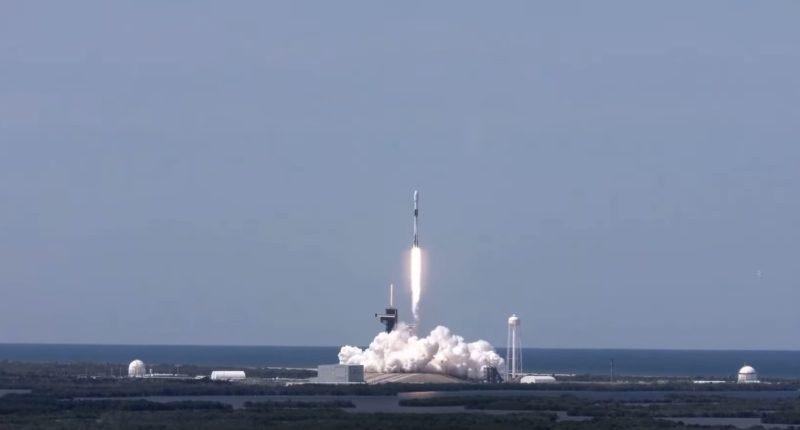SpaceX continues to taste success with its Starlink satellite launches. The company announced successful launch of yet another batch of Starlink satellites, the seventh such batch to have been placed into orbit. The launch once again validates and strengthens SpaceX’s ambitious 2020 timeline to commercially operate the satellite internet constellation.
As has been the case with all previous Starlink launches, SpaceX used a three-time used Falcon 9 rocket for the mission. Falcon 9’s first stage previously supported Crew Dragon’s first flight to the International Space Station, launch of the RADARSAT Constellation Mission, and the fourth Starlink mission.
While this of course marks yet another successful Starlink launch, it also highlights the relative ease that SpaceX has mastered in re-using several crucial rocket parts. This re-usability is what the company is banking on, to take it to Mars at an affordable price. Apart from Falcon 9’s three-times used booster, SpaceX also landed Falcon 9’s first stage on the “Of Course I Still Love You” droneship, which was stationed in the Atlantic Ocean. Falcon 9’s fairing previously supported the AMOS-17 mission.
Each Starlink satellite weights approximately 260 kg and features a compact, flat-panel design that minimizes volume, allowing for a dense launch stack to take full advantage of Falcon 9’s launch capabilities. With four powerful phased array and two parabolic antennas on each satellite, an enormous amount of throughput can be placed and redirected in a short time, for an order of magnitude lower cost than traditional satellite-based internet.
The Tech Portal is published by Blue Box Media Private Limited. Our investors have no influence over our reporting. Read our full Ownership and Funding Disclosure →






